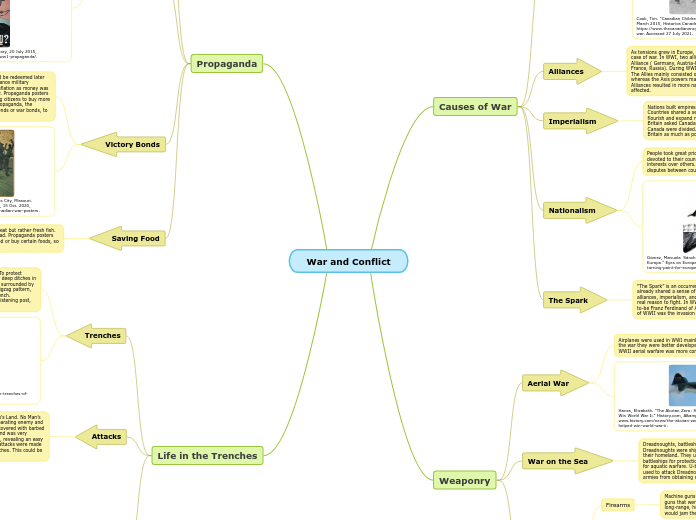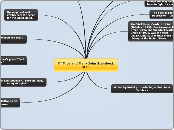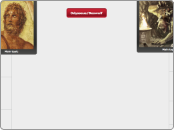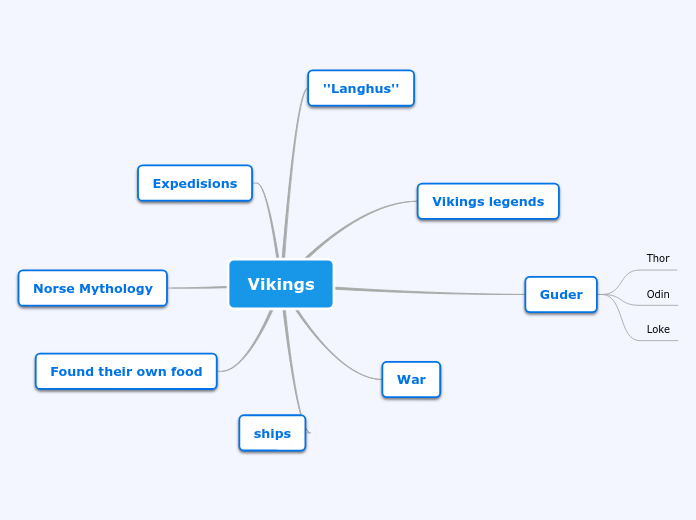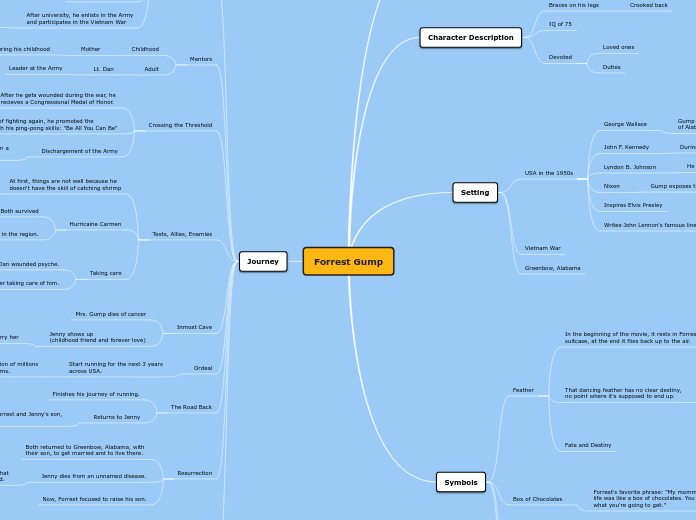War and Conflict
Global warming is the ongoing rise of the average temperature of the Earth's climate system which has various negative effects.
Life in the Trenches
Overpopulation creates an increased demand for energy as well as having negative effects on our environment and ecosystems.
Horrors of Trench Warfare
Overfishing is the removal of a species of fish from a body of water at a rate that the species cannot replenish, resulting in those species becoming underpopulated in that area.
This will lead to a Marine Ecosystem imbalance with time.
Commision, Centennial. “Trench Warfare.” Home - World War I Centennial, www.worldwar1centennial.org/index.php/edu-home/edu-topics/582-trench-warfare/5049-trench-warfare.html.
Life in the trenches was incredibly dangerous for soldiers. Every day, soldiers were at risk of death and injury. The types of dangers they faced were poison gas, shell fragments/explosives, bullets, and illnesses like trench foot. As Germans used a lot of poison gas in their surprise attacks, soldiers would rush to get their gas masks. Some could not get the masks in time whereas others would have faulty masks, causing the inevitable death of soldiers. Furthermore, while on sentry duty or being caught in warfare can endanger the lives of soldiers. In the trenches, the usage of explosives was very common. The shell fragments left behind by the grenades can cause injury to many people as well as the explosive itself. Moreover, soldiers were at risk of being shot anytime they left the trenches. While on trench raids, soldiers were at risk of being shot as they had to travel through No Man’s Land, leaving craters as their only line of defence. Finally, since trenches were very dirty and muddy, soldiers would get trench foot and lice. Overall, soldiers faced incredible danger during their time in the trenches.
Attacks
Water is essential for agricultural production and food security. It is the lifeblood of ecosystems, including forests, lakes, and wetlands.
Overpopulation affects our water and this has negative outcomes.
During trench warfare, attacks happened through No Man’s Land. No Man’s Land is a narrow, muddy, and treeless stretch of land separating enemy and allied trenches during the war. No Man’s Land often was covered with barbed wire, land mines, and shell holes. Going into No Man’s Land was very dangerous as there was little to no protection for soldiers, revealing an easy target for enemy forces. Even though it was dangerous, attacks were made by crossing No Man’s Land and attacking the enemy trenches. This could be through trench raids, bombing, chlorine gas, etc.
Trenches
Over-cultivation is the practice of excessive farming on a piece of land to the point of degradation of the soil as well as the land itself.
Baker, Chris. “The Long, Long Trail.” The Long Long Trail, www.longlongtrail.co.uk/soldiers/a-soldiers-life-1914-1918/life-in-the-trenches-of-the-first-world-war/.
In WW1and WWII, soldiers mainly fought in trench warfare. To protect themselves from enemy gunfire and shrapnel, armies dug up deep ditches in the ground, also known as trenches. The trenches were then surrounded by barbed wire and machine guns. Trenches were laid out in a zigzag pattern, so the enemy fire could not sweep along the length of the trench. Furthermore, in the trenches, there was an observation and listening post, from which soldiers would monitor enemy activity.
Propaganda
Climate change is likely to both increase electricity demand for cooling in the summer and decrease electricity, natural gas, heating oil, and wood demand for heating in the winter.
Saving Food
Finding reusable energy sources can be our first step towards conserving our environment.
Citizens were encouraged to buy less meat and wheat but rather fresh fish. This was to help supply soldiers with meat and bread. Propaganda posters were used to influence women at home to save food or buy certain foods, so more food could be supplied to armies.
Victory Bonds
How will climate change affect the production of clean energy?
e.g.: solar, wind, water
Inscription on the Liberty Memorial Tower in Downtown Kansas City, Missouri. “Canadian War Posters.” National WWI Museum and Memorial, 15 Oct. 2020, www.theworldwar.org/explore/exhibitions/past-exhibitions/canadian-war-posters.
Victory Bonds were loans to the government that could be redeemed later with interest. The government used these bonds to finance military operations in the war. This was also a way to control inflation as money was being taken out of circulation from a wartime economy. Propaganda posters would invoke a sense of nationalism in citizens, causing citizens to buy more victory bonds and help their armies in war. Through propaganda, the government influenced many citizens to buy victory bonds or war bonds, to help finance the war.
Enlistment
“Canadian WWI Propaganda.” All About Canadian History, 20 July 2015, cdnhistorybits.wordpress.com/2015/03/24/canadian-ww1-propaganda/.
Propaganda posters in times of war were heavily created for enlistment. These posters were meant for young, able-bodied men to fight in the war. As armies needed as much support as possible, these posters were the most common. To influence others, these posters would contain certain wording such as: “Your country needs you”. This can encourage others to enlist because they feel the need to fight for their country.
Definition
New infrastructure investments may be necessary to meet increased energy demand.
e.g.: nuclear power plants
Propaganda is an opinion, usually from a biased view, to influence a specific audience. During times of war, propaganda posters were used to promote enlistment, buying victory bonds, and saving specific foods.
Weaponry
Healthy ecosystems and rich biodiversity are fundamental to life on our planet.
Even small changes in average temperatures can have a significant effect upon ecosystems.
Artillery
The inter-connected nature of ecosystems means that the loss of species can have knock-on effects upon a range of ecosystem functions.
e.g. bees go extinct
Yusser, Serge. “German Artillery of WW2.” 123RF, 2012, www.123rf.com/photo_7906397_german-artillery-of-ww2.html.
Tanks
Bombs, Bombshells
Firearms
Machine guns and repeating rifles were used in war. Machine guns are large guns that were easy to reload and used long-range. Rifles were also used for long-range, however, they were difficult to reload in trenches because mud would jam the rifle.
War on the Sea
Climate change will affect mountain and lowland ecosystems, the diversity of wildlife, and the distribution of freshwater.
e.g.: forest fires
Dreadnoughts, battleships, and U-boats were all commonly used in war. Dreadnoughts were ships used to carry supplies and food to armies from their homeland. They usually travelled in a convoy system surrounded by battleships for protection. Battleships were ships armed with artillery used for aquatic warfare. U-boats were submarines used in war. They were mainly used to attack Dreadnoughts and other supply boats, to stop opposing armies from obtaining supplies.
Aerial War
Climate change is affecting the habitats of several species, which must either adapt or migrate to areas with more favorable conditions.
e.g.: natural habitat disappearing
Hanes, Elizabeth. “The Akutan Zero: How a Captured Japanese Fighter Plane Helped Win World War Ii.” History.com, A&E Television Networks, 4 June 2012, www.history.com/news/the-akutan-zero-how-a-captured-japanese-fighter-plane-helped-win-world-war-ii.
Airplanes were used in WWI mainly for renaissance, however by the end of the war they were better developed and equipped with machine guns. In WWII aerial warfare was more commonly used for fighting purposes.
Causes of War
Climate change is supported by scientific evidence.
The Spark
“The Spark” is an occurrence that is known as the start of a war. As nations already shared a sense of rivalry and tensions because of militarism, alliances, imperialism, and nationalism, a spark caused nations to have a real reason to fight. In WWI, the spark of war was the assassination of King-to-be Franz Ferdinand of Austria-Hungary in June 1914, whereas the spark of WWII was the invasion of Poland by Germany in September of 1939.
Nationalism
Gómez, Manuela Sánchez. “Nationalism: A Turning Point for Europe? • Eyes on Europe.” Eyes on Europe, 3 July 2020, www.eyes-on-europe.eu/nationalism-a-turning-point-for-europe/.
People took great pride in their own nation. Citizens were expected to be devoted to their country. This caused everyone to value their own nation’s interests over others. The rivalry between nations and nationalism caused disputes between countries to become common.
Imperialism
Write down the consequences caused by this issue and how it will affect our lives and the environment in the future.
e.g.: flooding, rainfall increase
Nations built empires of control through colonies in other countries. Countries shared a sense of rivalry, making citizens want their country to flourish and expand more than others. For example, during the Naval Race, Britain asked Canada for help in building a larger navy. The people of Canada were divided. Most English-Canadians (Imperialists) wanted to help Britain as much as possible, whereas others wanted the opposite.
Alliances
Write down the consequences caused by the melting of the ice-caps and how it will affect our lives and the environment in the future.
e.g.: decreasing of polar bear habitat
As tensions grew in Europe, countries sought allies for military support in case of war. In WWI, two alliance systems were developed: The Triple Alliance ( Germany, Austria-Hungary, Italy) and the Triple Entente ( Britain, France, Russia). During WWII, the world split up into Allies and Axis powers. The Allies mainly consisted of Britain, the U.S, and the Soviet Union, whereas the Axis powers mainly consisted of Germany, Japan, and Italy. Alliances resulted in more nations joining wars, causing more people to be affected.
Militarism
Write down the consequences caused by this issue and how it will affect our lives and the environment in the future.
e.g.: decreasing of land surface
Cook, Tim. "Canadian Children and the Great War". The Canadian Encyclopedia, 04 March 2015, Historica Canada. https://www.thecanadianencyclopedia.ca/en/article/canadian-children-and-the-great-war. Accessed 27 July 2021.
As there was no League of Nations in the early 1900s to settle disputes, nations felt it best to grow and strengthen their armies, in case they needed to settle disputes by force. For example in 1898, Britain had the most powerful navy in the world, when Germany declared it would build a larger and better navy. Britain felt threatened and started expanding its navy with the help from allies. This led to the great Naval Race, which impacted WWI when rivalry added fuel to the fire.
